A Novel MIMO Radar Orthogonal Waveform Design Algorithm Based on Intelligent Ions Motion
Abstract
1. Introduction
- We derive the autocorrelation and cross-correlation functions of polyphase codes.
- We design an evaluation function to evaluate the orthogonal performance of the polyphase codes.
- The improved ions motion algorithm (IIMO) is presented along with an optimal guiding principle of the same charge ions in the liquid state and an ion updating strategy based on the fitness ranking in the crystal state.
- The improved algorithm is employed to optimize the polyphase codes.
2. Orthogonal Waveform Design for MIMO Radar
3. Improved Ions Motion Algorithm for Orthogonal Waveform Design
3.1. Ions Motion Algorithm
3.1.1. Liquid State
3.1.2. Crystal State
3.2. Improved Ions Motion Algorithm
3.2.1. Same-Sex Optimal Guidance in Liquid State
3.2.2. Crystal State Updating Based on Ranking Mechanism
3.3. Orthogonal Waveform Optimization
3.3.1. Ions Initialization
3.3.2. Implementation Process
3.4. Computational Complexity
4. Experimental Results and Analysis
5. Conclusions
Author Contributions
Funding
Conflicts of Interest
References
- Aubry, A.; De Maio, A.; Govoni, M.A.; Martino, L. On the Design of Multi-Spectrally Constrained Constant Modulus Radar Signals. IEEE Trans. Signal Process. 2020, 68, 2231–2243. [Google Scholar] [CrossRef]
- Liu, F.; Zhou, L.; Masouros, C.; Li, A.; Luo, W.; Petropulu, A. Toward Dual-functional Radar-Communication Systems: Optimal Waveform Design. IEEE Trans. Signal Process. 2018, 66, 4264–4279. [Google Scholar] [CrossRef]
- Alaie, M.B.; Olamaei, S.A. Waveform design for TDM-MIMO radar systems. Signal Process. 2020, 167, 107307. [Google Scholar] [CrossRef]
- Yu, X.; Alhujaili, K.; Cui, G.; Monga, V. MIMO Radar Waveform Design in the Presence of Multiple Targets and Practical Constraints. IEEE Trans. Signal Process. 2020, 68, 1974–1989. [Google Scholar] [CrossRef]
- Lv, L.H. Waveform optimization for MIMO-STAP to improve the detection performance. Signal Process. 2011, 91, 2690–2696. [Google Scholar]
- Alhujaili, K.; Monga, V.; Rangaswamy, M. Transmit MIMO Radar Beampattern Design via Optimization on the Complex Circle Manifold. IEEE Trans. Signal Process. 2019, 67, 3561–3575. [Google Scholar] [CrossRef]
- Qian, J.; Lops, M.; Zheng, L.; Wang, X.; He, Z. Joint System Design for Coexistence of MIMO Radar and MIMO Communication. IEEE Trans. Signal Process. 2018, 66, 3504–3519. [Google Scholar] [CrossRef]
- Bolhasani, M.; Mehrshahi, E.; Ghorashi, S.A.; Alijani, M.S. Constant Envelope Waveform Design to Increase Range Resolution and SINR in Correlated MIMO Radar. Signal Process. 2019, 163, 59–65. [Google Scholar] [CrossRef]
- Yu, X.; Cui, G.; Yang, J.; Kong, L.; Li, J. Wideband MIMO Radar Waveform Design. IEEE Trans. Signal Process. 2019, 67, 3487–3501. [Google Scholar] [CrossRef]
- Karimi, V.; Mohseni, R.; Samadi, S. Adaptive OFDM Waveform Design for Cognitive Radar in Signal-Dependent Clutter. IEEE Syst. J. 2019, 14, 3630–3640. [Google Scholar] [CrossRef]
- Deng, H.; Geng, Z.; Himed, B. Mimo radar waveform design for transmit beamforming and orthogonality. IEEE Trans. Aerosp. Electron. Syst. 2016, 52, 1421–1433. [Google Scholar] [CrossRef]
- Naghibi, T.; Namvar, M.; Behnia, F. Optimal and robust waveform design for MIMO radars in the presence of clutter. Signal Process. 2010, 90, 1103–1117. [Google Scholar] [CrossRef]
- Kim, E.H.; Kim, S.B.; Han, S.S.; Shin, S.J. Design of Polyphase Codes Using Simulated Annealing. J. Korean Inst. Electromagn. Eng. Sci. 2020, 31, 383–393. [Google Scholar] [CrossRef]
- Ren, W.; Zhang, H.; Liu, Q.; Yang, Y. Greedy Code Search Based Memetic Algorithm for the Design of Orthogonal Polyphase Code Sets. IEEE Access 2019, 7, 13561–13576. [Google Scholar] [CrossRef]
- Zeng, X.; Zhang, Y.; Guo, Y. Polyphase coded signal design for MIMO radar using MO-MicPSO. J. Syst. Eng. Electron. 2011, 22, 381–386. [Google Scholar] [CrossRef]
- Mostafa, B.; Esfandiar, M.; Ali, G.S. Waveform Covariance Matrix Design for Robust Signal-Dependent Interference Suppression in Colocated MIMO Radars. Signal Process. 2018, 152, 311–319. [Google Scholar]
- Tang, B.; Li, J.; Zhang, Y.; Tang, J. Design of MIMO radar waveform covariance matrix for Clutter and Jamming suppression based on space time adaptive processing. Signal Process. 2016, 121, 60–69. [Google Scholar] [CrossRef]
- Feraidooni, M.M.; Gharavian, D.; Imani, S.; Alaee-Kerahroodi, M. Designing M-ary Sequences and Space-Time Receive Filter for Moving Target in Cognitive MIMO Radar Systems. Signal Process. 2020, 174, 107620. [Google Scholar] [CrossRef]
- Zhang, W.; Hu, J.; Wei, Z.; Ma, H.; Yu, X.; Li, H. Constant Modulus Waveform Design for MIMO Radar Transmit Beampattern with Residual Network. Signal Process. 2020, 177, 107735. [Google Scholar] [CrossRef]
- Shi, S.; Wang, Z.; He, Z.; Cheng, Z. Constrained waveform design for dual-functional MIMO radar-Communication system—ScienceDirect. Signal Process. 2020, 171, 107530. [Google Scholar] [CrossRef]
- Tang, Y.; Zhang, Y.D.; Amin, M.G.; Sheng, W. Wideband multiple-input multiple-output radar waveform design with low peak-to-average ratio constraint. Iet Radar Sonar Navig. 2015, 10, 325–332. [Google Scholar] [CrossRef]
- Fan, W.; Liang, J.; Yu, G.; So, H.C.; Lu, G. Minimum local peak sidelobe level waveform design with correlation and/or spectral constraints. Signal Process. 2020, 171, 107450. [Google Scholar] [CrossRef]
- Cheng, Z.; Liao, B.; He, Z.; Li, J.; Han, C. A Nonlinear-ADMM Method for Designing MIMO Radar Constant Modulus Waveform with Low Correlation Sidelobes. Signal Process. 2019, 159, 93–103. [Google Scholar] [CrossRef]
- Feng, X.; Zhao, Y.N.; Zhou, Z.Q.; Zhao, Z.F. Waveform design with low range sidelobe and high Doppler tolerance for cognitive radar. Signal Process. 2017, 139, 143–155. [Google Scholar] [CrossRef]
- Bhamre, P.M.; Gupta, S. A Novel Constrained Waveform Designing for MIMO RADAR Using Optimization Algorithms. IETE Tech. Rev. 2019, 37, 529–539. [Google Scholar] [CrossRef]
- Kumar, M.; Chandrasekar, V. Intrapulse Polyphase Coding System for Second Trip Suppression in a Weather Radar. IEEE Trans. Geosci. Remote Sens. 2020, 99, 1–13. [Google Scholar] [CrossRef]
- Zhao, J.; Gao, F.; Kuang, L.; Wu, Q.; Jia, W. Channel Tracking with Flight Control System for UAV mmWave MIMO Communications. IEEE Commun. Lett. 2018, 22, 1224–1227. [Google Scholar] [CrossRef]
- Nijsure, Y.A.; Kaddoum, G.; Mallat, N.K.; Gagnon, G.; Gagnon, F. Cognitive Chaotic UWB-MIMO Detect-Avoid Radar for Autonomous UAV Navigation. IEEE Trans. Intell. Transp. Syst. 2016, 17, 3121–3131. [Google Scholar] [CrossRef]
- Javidy, B.; Hatamlou, A.; Mirjalili, S. Ions motion algorithm for solving optimization problems. Appl. Soft Comput. 2015, 32, 72–79. [Google Scholar] [CrossRef]
- Song, X.F.; Zhang, Y.; Guo, Y.N.; Sun, X.Y.; Wang, Y.L. Variable-size Cooperative Coevolutionary Particle Swarm Optimization for Feature Selection on High-dimensional Data. IEEE Trans. Evol. Comput. 2020, 24, 882–895. [Google Scholar] [CrossRef]
- Zhu, Q.; Zhang, Q.; Lin, Q. A Constrained Multiobjective Evolutionary Algorithm with Detect-and-Escape Strategy. IEEE Trans. Evol. Comput. 2020, 24, 938–947. [Google Scholar] [CrossRef]
- Das, S.; Bhattacharya, A.; Chakraborty, A.K. Quasi-reflected ions motion optimization algorithm for short-term hydrothermal scheduling. Neural Comput. Appl. 2018, 29, 123–149. [Google Scholar] [CrossRef]

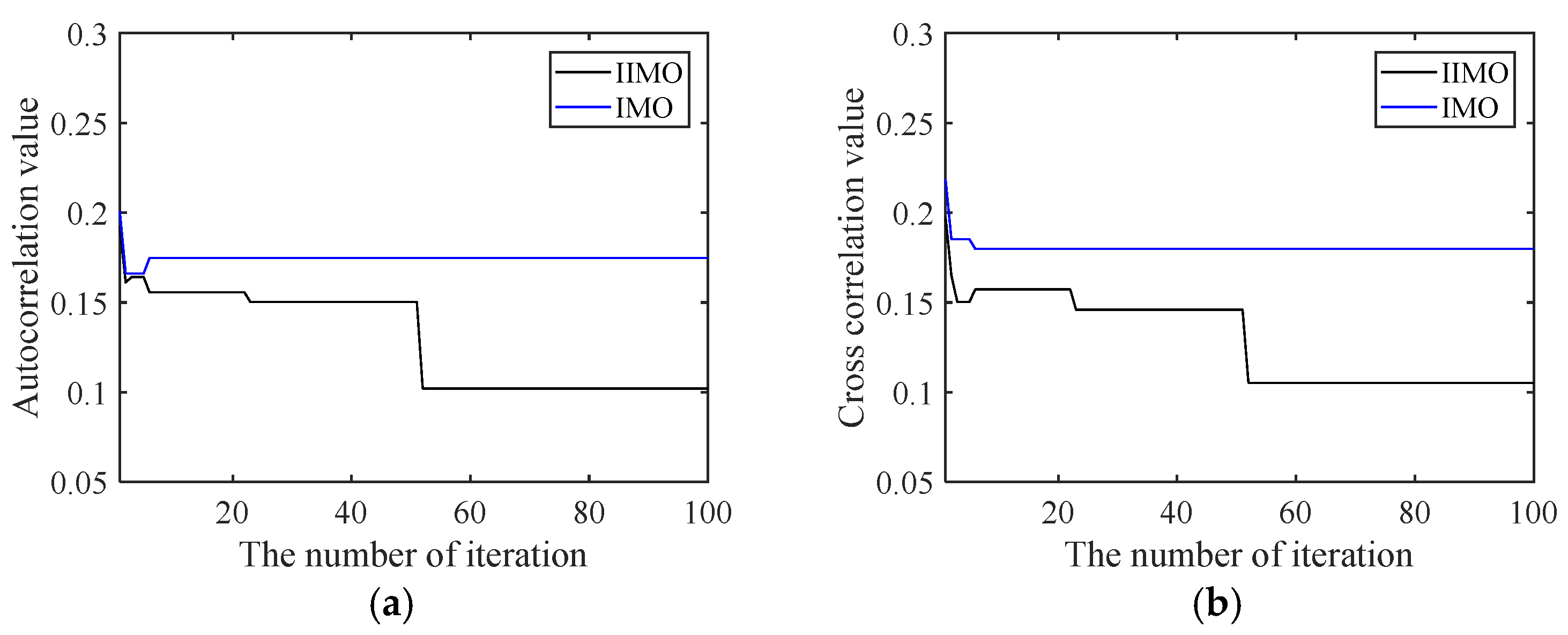

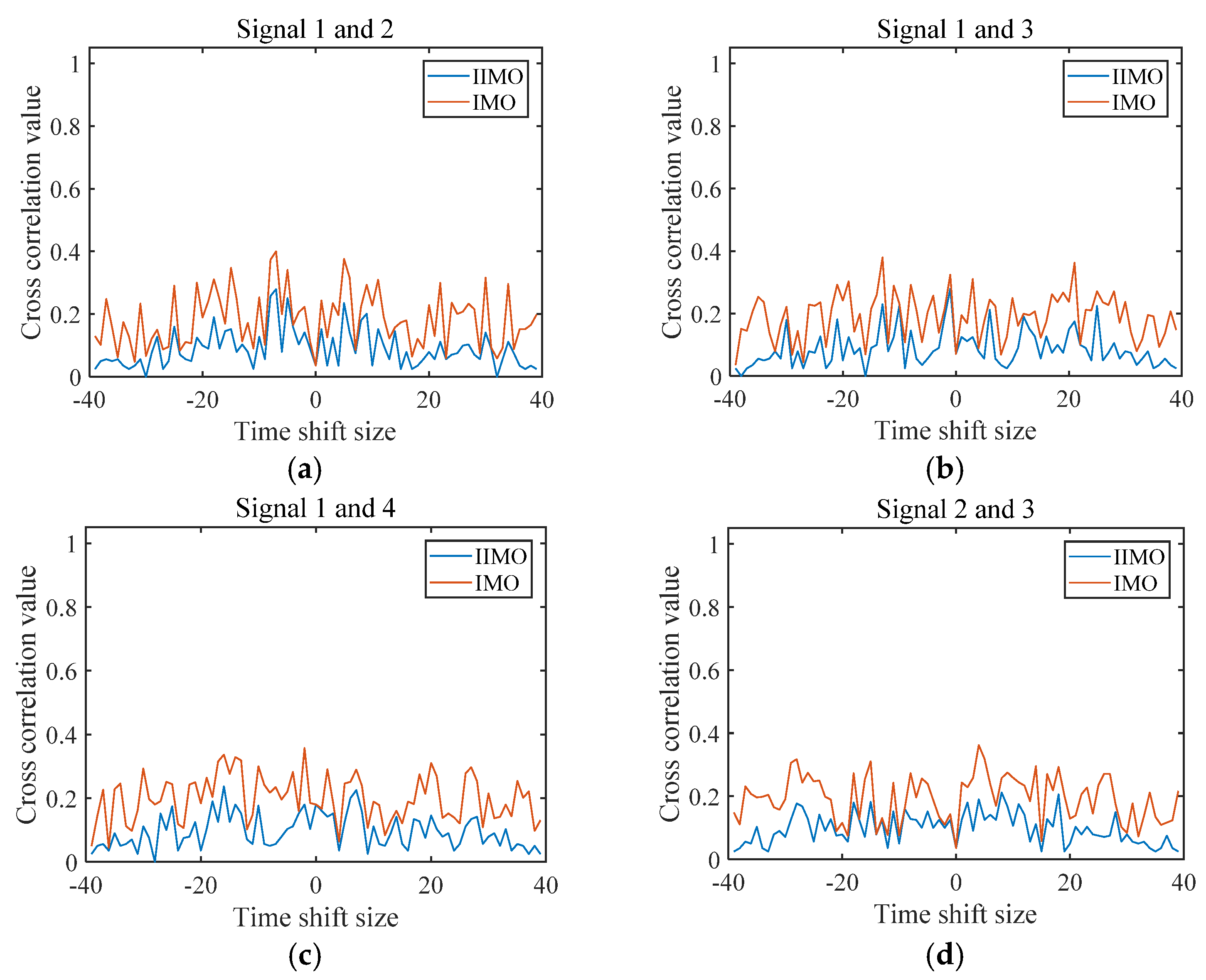
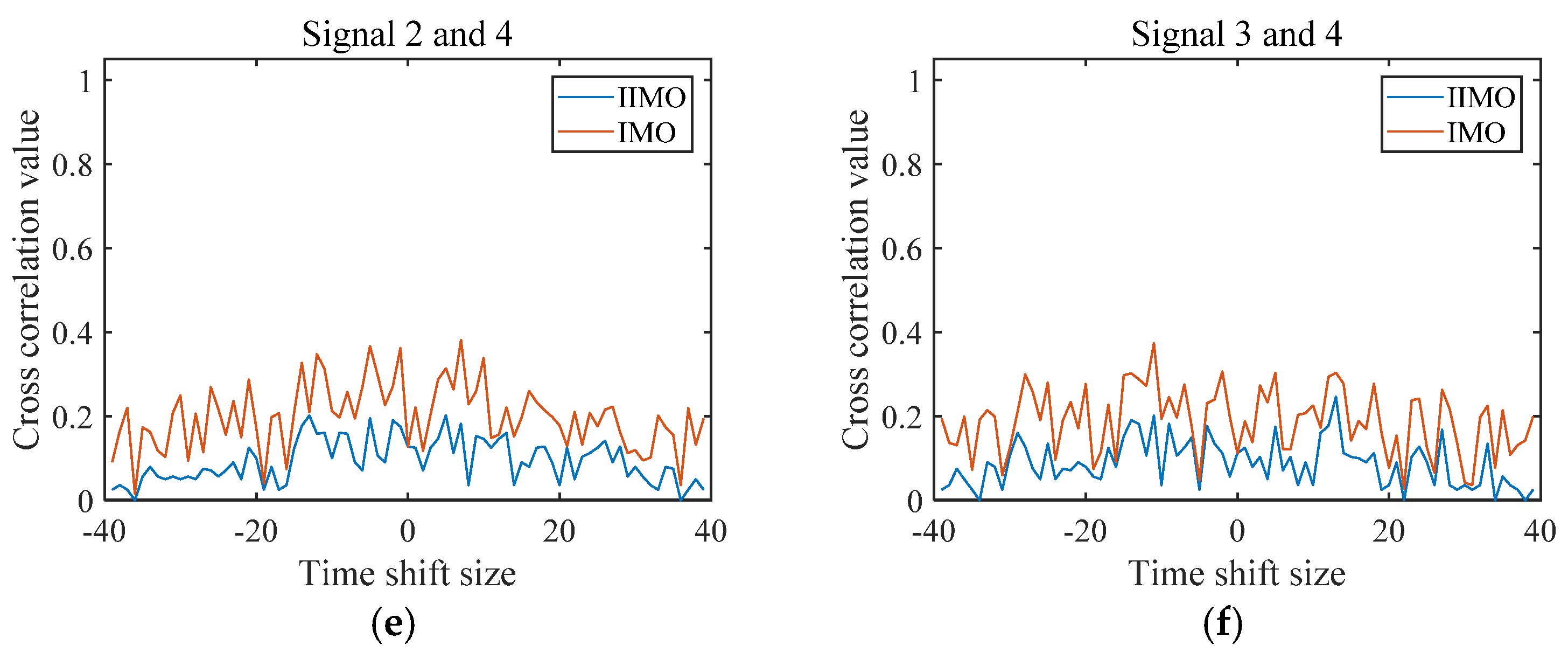
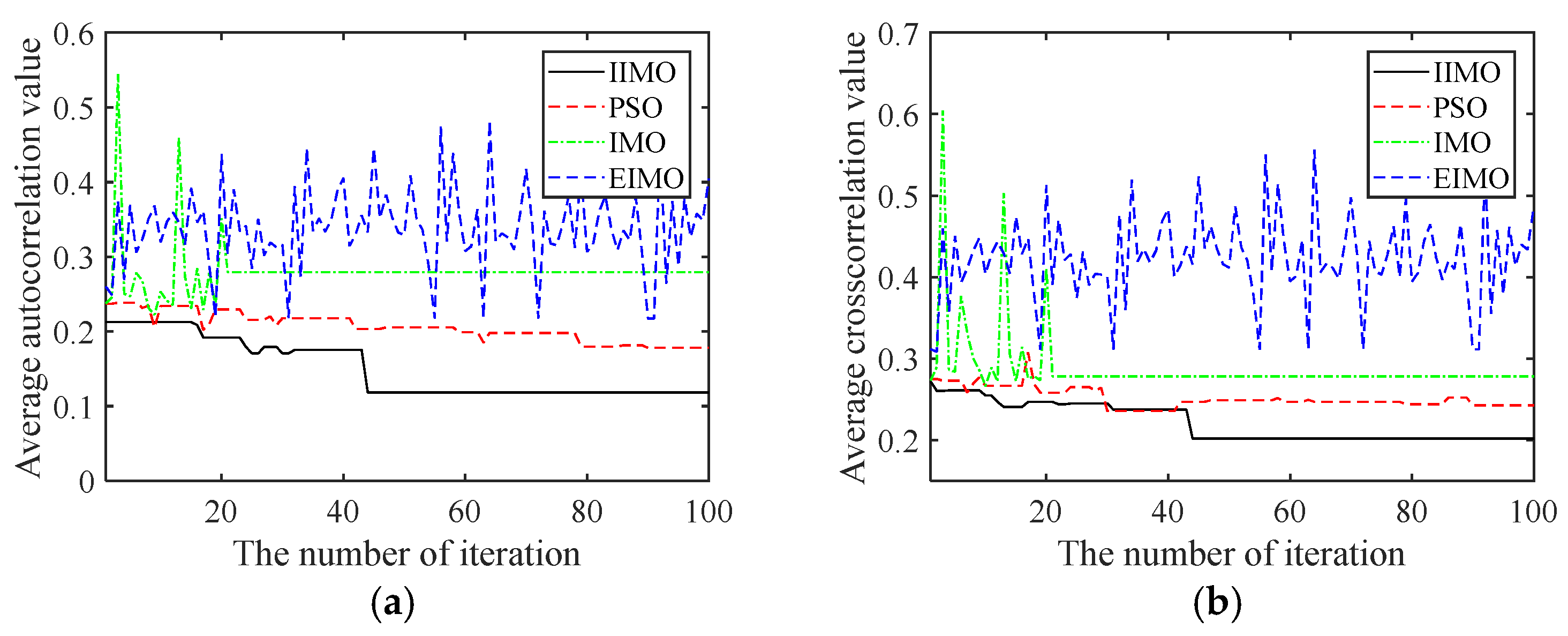
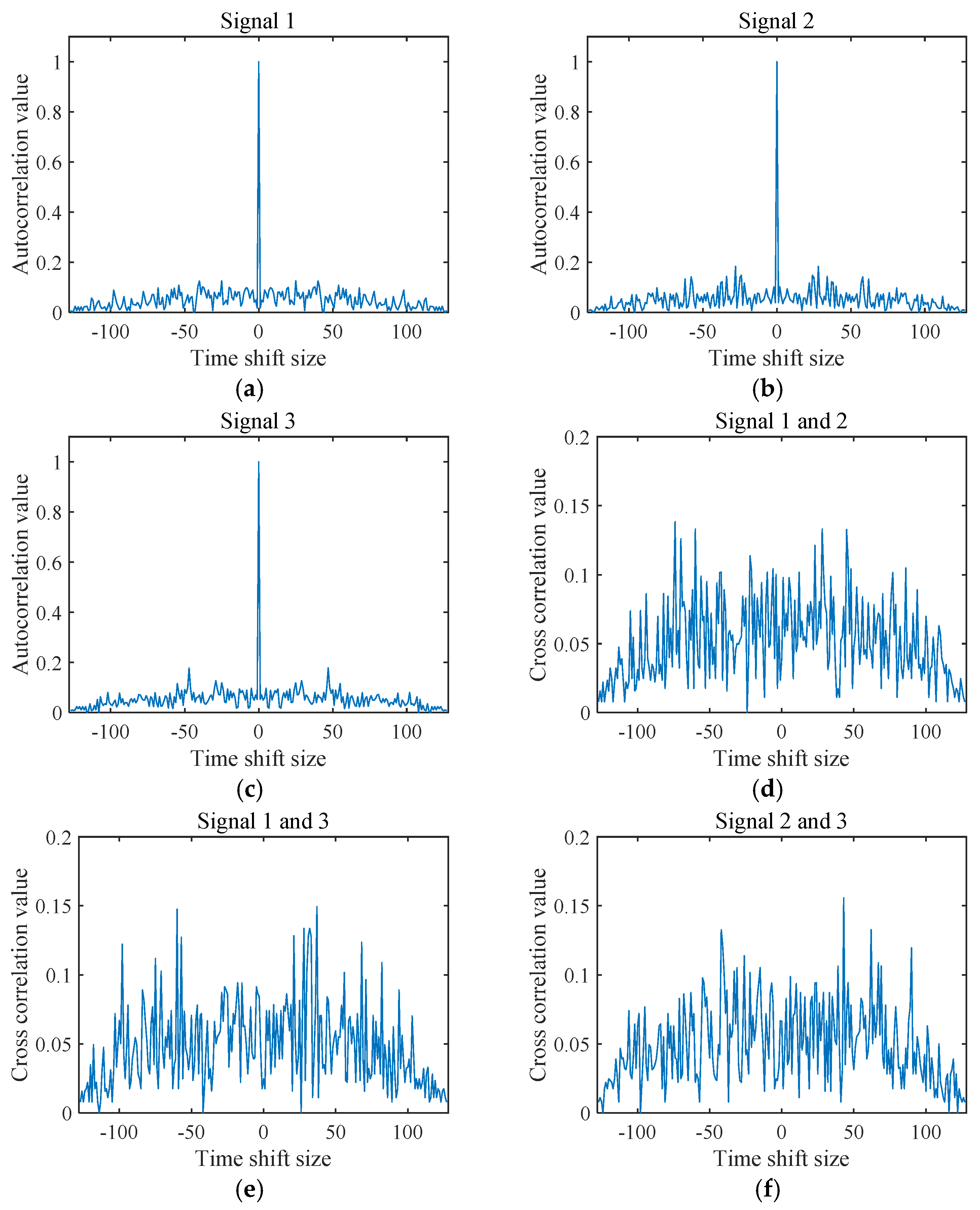
Publisher’s Note: MDPI stays neutral with regard to jurisdictional claims in published maps and institutional affiliations. |
© 2021 by the authors. Licensee MDPI, Basel, Switzerland. This article is an open access article distributed under the terms and conditions of the Creative Commons Attribution (CC BY) license (https://creativecommons.org/licenses/by/4.0/).
Share and Cite
Zhang, L.; Wen, F. A Novel MIMO Radar Orthogonal Waveform Design Algorithm Based on Intelligent Ions Motion. Remote Sens. 2021, 13, 1968. https://doi.org/10.3390/rs13101968
Zhang L, Wen F. A Novel MIMO Radar Orthogonal Waveform Design Algorithm Based on Intelligent Ions Motion. Remote Sensing. 2021; 13(10):1968. https://doi.org/10.3390/rs13101968
Chicago/Turabian StyleZhang, Lei, and Fangqing Wen. 2021. "A Novel MIMO Radar Orthogonal Waveform Design Algorithm Based on Intelligent Ions Motion" Remote Sensing 13, no. 10: 1968. https://doi.org/10.3390/rs13101968
APA StyleZhang, L., & Wen, F. (2021). A Novel MIMO Radar Orthogonal Waveform Design Algorithm Based on Intelligent Ions Motion. Remote Sensing, 13(10), 1968. https://doi.org/10.3390/rs13101968






